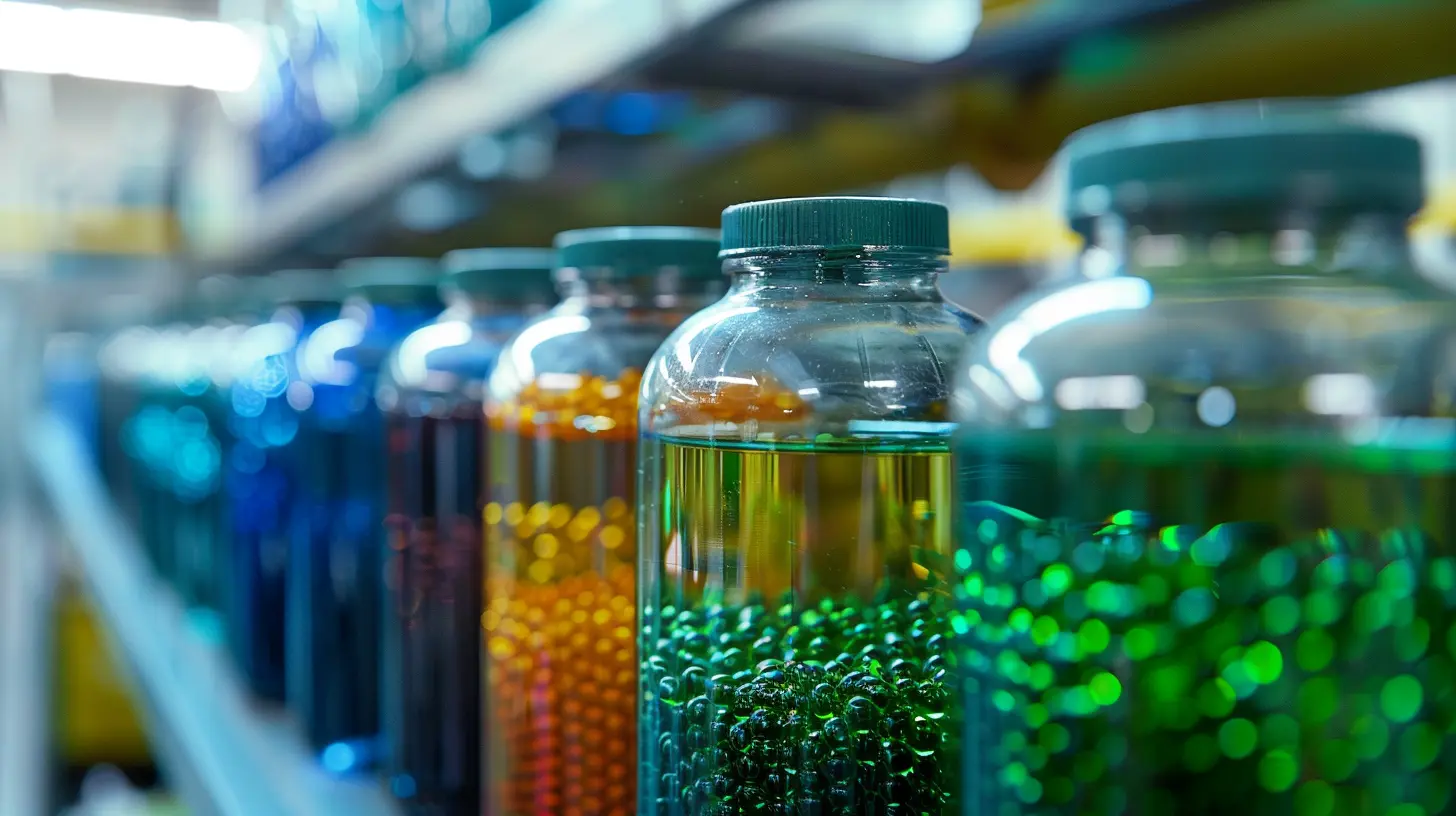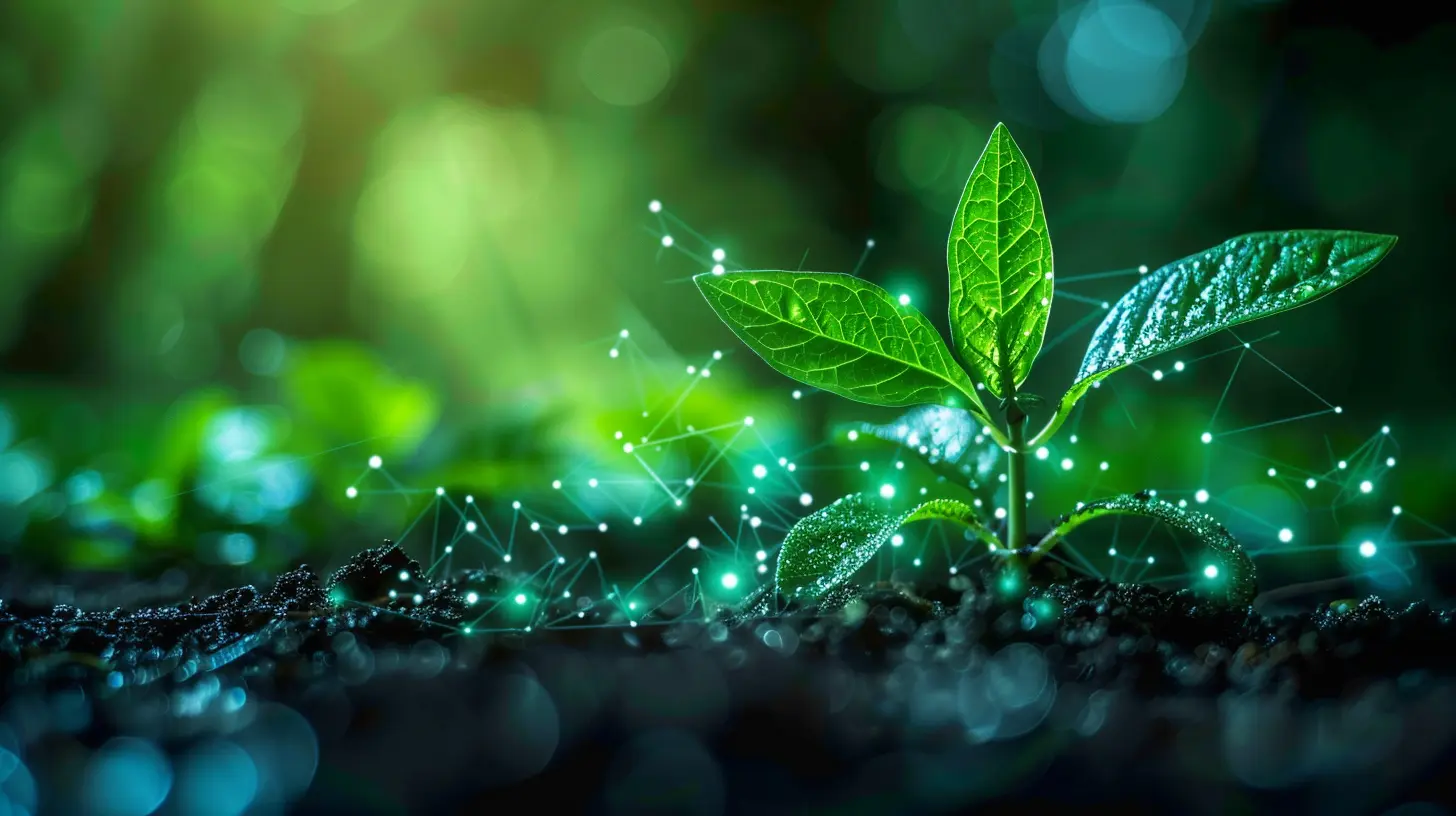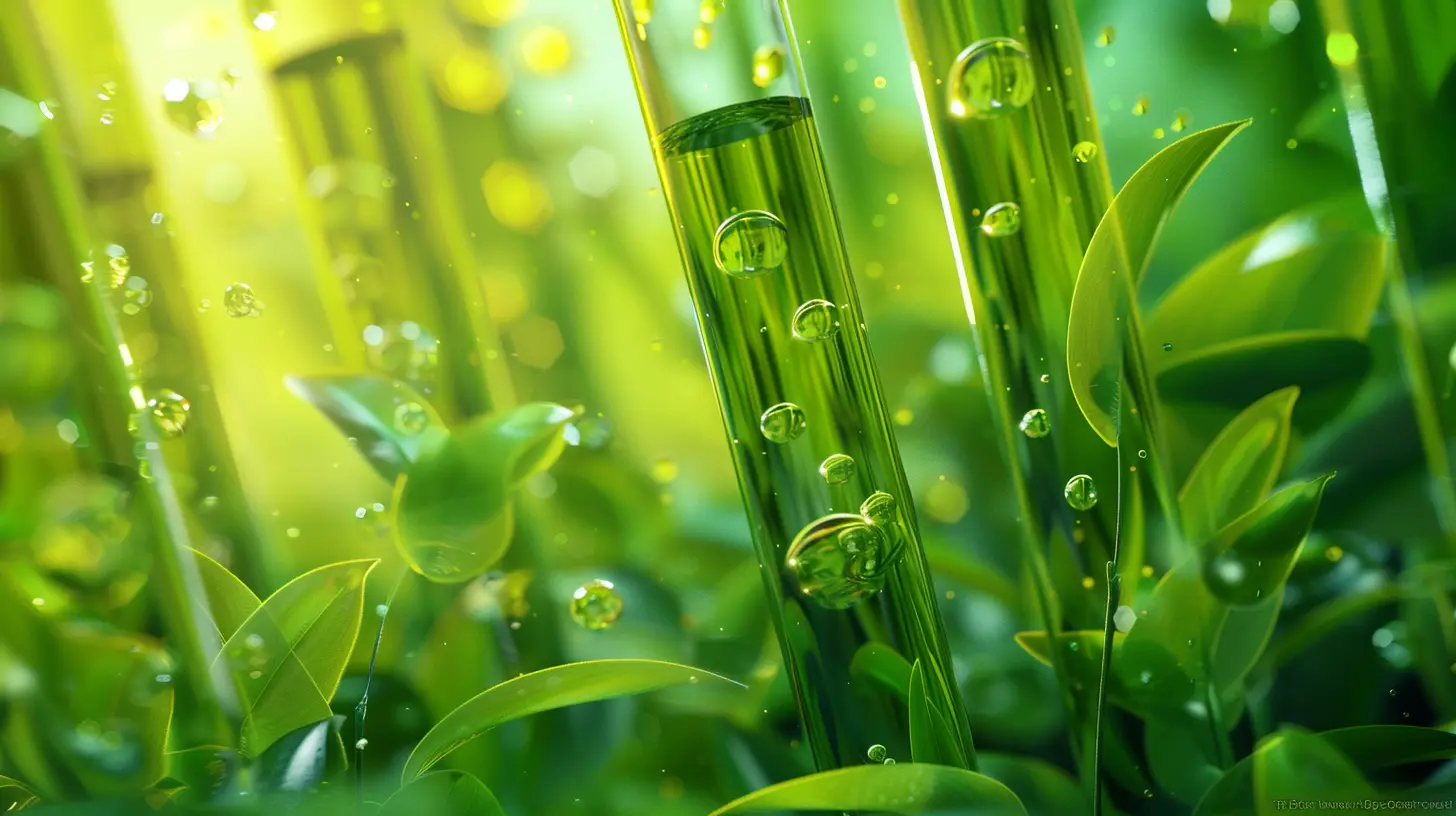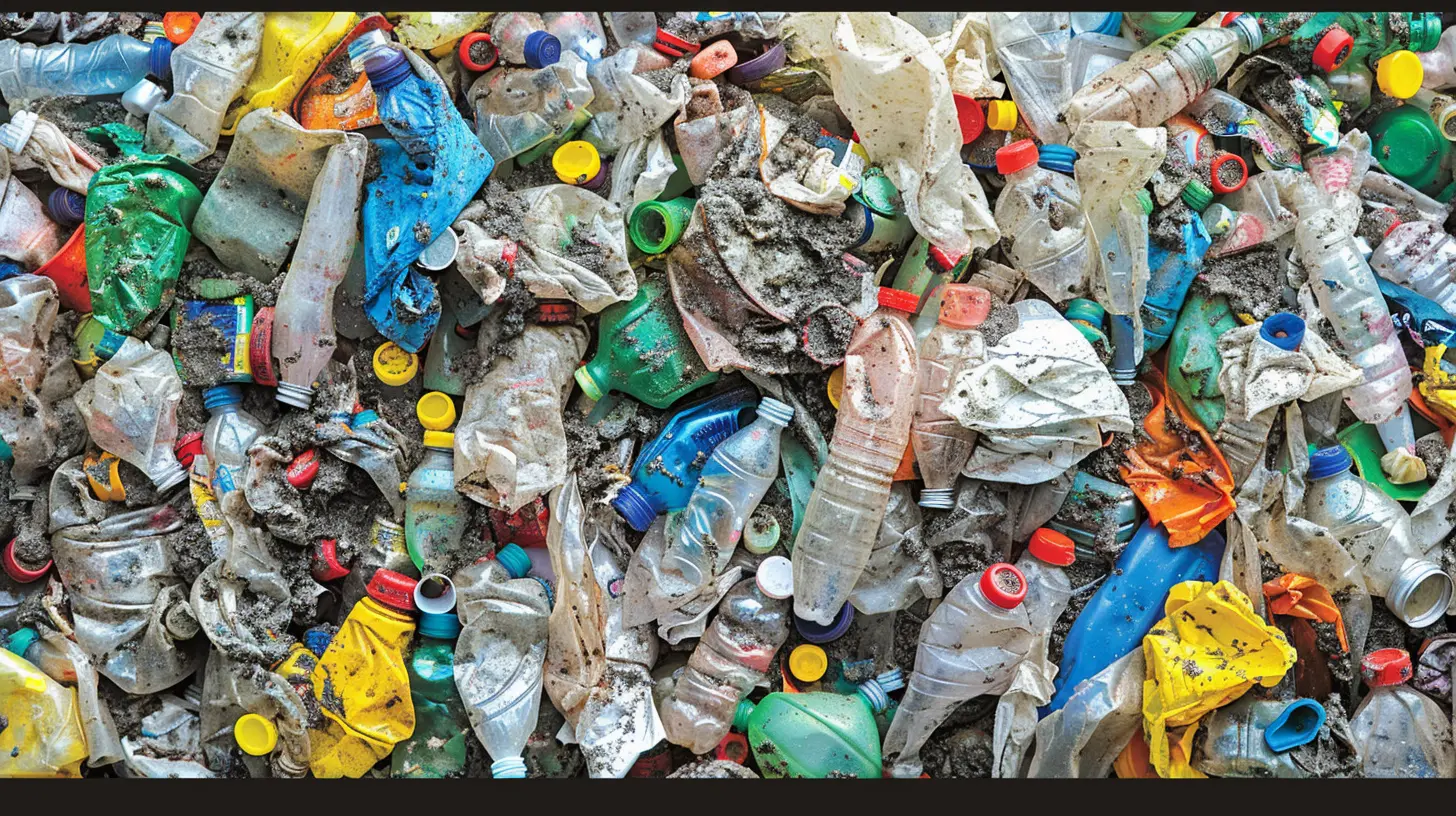Bio-Based Plastics: The Green Tech Solution to Traditional Plastics
1 December 2024
When you think of plastic, what comes to mind? Maybe it’s the countless water bottles you see at the gym, the packaging used in almost everything we buy, or even the bags that once lined grocery store aisles. Traditional plastics are everywhere, right? But here's the kicker: they're not exactly eco-friendly. In fact, they’re a huge contributor to pollution. That's where bio-based plastics come in—the green tech solution that could revolutionize how we think about plastics.

What Are Bio-Based Plastics?
Let’s start with the basics. Traditional plastics are made from fossil fuels like oil and natural gas. They’re durable, cheap, and versatile, but they also stick around for centuries, clogging up landfills and harming marine life. On the flip side, bio-based plastics—also known as bioplastics—are made from renewable biological resources. Think corn, sugarcane, or even algae.Now, I know what you're thinking. "Are bio-based plastics really that different?" The answer is yes, and in more ways than you might imagine. While they look and feel like traditional plastics, their origins and potential environmental impact make them a game-changer in the world of sustainable technology.
The Composition of Bio-Based Plastics
Bio-based plastics are derived from biomass—essentially organic materials that come from plants or animals. Unlike petroleum-based plastics, which are a byproduct of fossil fuels, bio-based plastics use raw materials like corn starch, vegetable fats, and woodchips. These materials are processed to create polymers that can be molded into various plastic products.Here’s the cool part: some bio-based plastics are actually biodegradable, which means they break down naturally over time, unlike traditional plastics that can take hundreds of years to decompose. However, it's important to note that not all bio-based plastics are biodegradable. Some are designed to be durable, just like regular plastics, but with the added benefit of being made from renewable resources.
Bio-Based vs. Biodegradable: What’s the Difference?
Before we go any further, let’s clear up a common misconception. Bio-based doesn’t always mean biodegradable. This is where things can get a little tricky. Bio-based plastics refer to where the plastic comes from (renewable sources), while biodegradable plastics refer to how the plastic breaks down after use.Some bio-based plastics are biodegradable, meaning they can decompose into natural elements, but others are not. Similarly, some traditional (petroleum-based) plastics can be engineered to be biodegradable, even though they're made from non-renewable resources. Confusing? A little. But the main takeaway here is that being bio-based is about the origin of the material, not its end-of-life properties.

Why Bio-Based Plastics Matter
Alright, so why should we care about bio-based plastics? Well, for starters, they offer a more sustainable alternative to traditional plastics. Here’s why that’s a big deal:1. Reduced Carbon Footprint
Since bio-based plastics are made from renewable resources, they contribute far less to carbon emissions compared to traditional plastics, which rely on fossil fuels. When we burn fossil fuels, we're releasing carbon that was trapped underground for millions of years, adding to the greenhouse effect and accelerating climate change.Bio-based plastics, on the other hand, come from plants that absorb CO2 from the atmosphere as they grow. This creates a more balanced carbon cycle. Of course, producing and processing bio-based plastics still emits some CO2, but the overall impact is significantly lower.
2. Less Dependency on Fossil Fuels
Let’s face it, our dependence on fossil fuels isn’t doing the planet any favors. Traditional plastics are a byproduct of oil and natural gas production. By shifting to bio-based plastics, we can reduce our reliance on fossil fuels, which are non-renewable and contribute to environmental degradation.With bio-based plastics, we’re tapping into renewable resources, meaning we don’t have to keep drilling into the Earth for oil. It’s a step in the right direction toward a more sustainable and less resource-intensive future.
3. Potential for Biodegradability
As mentioned earlier, some bio-based plastics are biodegradable, meaning they can break down into natural substances like water and CO2 without leaving harmful residues. This is a huge advantage when it comes to reducing plastic waste, especially in the fight against plastic pollution in oceans and landfills.Imagine if all the packaging you throw away could decompose in a matter of months rather than centuries. Sounds like a dream, right? Well, bio-based plastics have the potential to make that a reality—if they’re designed to be biodegradable.
4. Innovation in Waste Management
Bio-based plastics could also revolutionize how we handle waste. Traditional plastics are notoriously difficult to recycle. They need to be sorted, cleaned, and processed, which is costly and time-consuming. Plus, many plastics can only be recycled a limited number of times before degrading in quality.On the other hand, bio-based plastics open up new possibilities for more efficient recycling and composting systems. Some bio-based plastics can even be composted in industrial composting facilities, turning waste into valuable soil nutrients. This could help reduce landfill waste and improve soil health—talk about a win-win!

Challenges Facing Bio-Based Plastics
Now, I’d love to tell you that bio-based plastics are the perfect solution to the world’s plastic problem, but that wouldn’t be entirely true. Like any emerging technology, they come with their own set of challenges.1. Cost and Scalability
One of the biggest hurdles for bio-based plastics is the cost. Right now, they’re generally more expensive to produce than traditional plastics. This is largely due to the fact that the infrastructure for bio-based plastic production is still in its infancy. The good news? As more companies invest in bio-based plastics, the cost is expected to come down.Scalability is another issue. While bio-based plastics are great in theory, producing them on a global scale to meet the demands of industries like packaging, automotive, and electronics is no small feat. More research and development are needed to make bio-based plastics a viable alternative on a large scale.
2. Competition with Food Crops
Here’s another tricky part. Many bio-based plastics are made from food crops like corn and sugarcane. This raises concerns about land use and whether we’re diverting resources away from food production to make plastics. With a growing global population, we need to find ways to balance the need for renewable resources without compromising food security.Fortunately, researchers are exploring alternative feedstocks for bio-based plastics, such as agricultural waste, algae, and even carbon dioxide. These innovations could help mitigate the competition between food production and plastic manufacturing.
3. Consumer Awareness
Let’s be honest—most people don’t think twice about the type of plastic they’re using, let alone whether it’s bio-based or not. Consumer awareness is another challenge facing the adoption of bio-based plastics. For bio-based plastics to make a real impact, people need to understand their benefits and how to properly dispose of them (especially when it comes to composting or recycling).
The Future of Bio-Based Plastics
So, where do we go from here? The future of bio-based plastics looks promising, but it’s not without its challenges. The good news is that the industry is growing, with more companies and researchers exploring innovative ways to improve the production and performance of bio-based plastics.One exciting area of research is the use of algae and other non-food sources to create bio-based plastics. Algae grows quickly and doesn’t require arable land, making it a more sustainable option than crops like corn or sugarcane. Researchers are also working on creating carbon-negative plastics that actually take in more CO2 during production than they emit.
A Collaborative Effort
To make bio-based plastics a widespread solution, it’s going to take a collaborative effort from governments, industries, and consumers. Governments can play a role by implementing policies that encourage the use of bio-based materials and reduce reliance on traditional plastics. Industries need to invest in research and development to make bio-based plastics more cost-effective and scalable. As consumers, we can make more informed choices about the products we buy and how we dispose of them.Conclusion
Bio-based plastics are a promising green tech solution to the environmental problems caused by traditional plastics. They offer a range of benefits, from reducing our carbon footprint to lessening our dependence on fossil fuels. While there are challenges to overcome—such as cost, scalability, and consumer awareness—bio-based plastics represent a step in the right direction toward a more sustainable future.Will bio-based plastics completely replace traditional plastics overnight? Probably not. But they’re an important part of the puzzle in addressing the global plastic crisis. And hey, every small step counts, right?
all images in this post were generated using AI tools
Category:
Green TechnologyAuthor:

Michael Robinson
Discussion
rate this article
22 comments
Elle Franklin
Great insights on bio-based plastics! It's encouraging to see innovative solutions addressing environmental concerns. Exploring their scalability and potential uses in various industries could further enhance their adoption. Looking forward to more updates on sustainable advancements!
February 23, 2025 at 1:35 PM

Michael Robinson
Thank you for your thoughtful comment! I'm glad you found the insights valuable. Exploring scalability and applications is indeed crucial for wider adoption. Stay tuned for more updates on sustainable innovations!
Angie Graham
Thank you for this insightful article! It’s encouraging to see advancements in bio-based plastics as a sustainable alternative. Such innovations could significantly reduce our environmental impact and promote a greener future.
February 5, 2025 at 7:59 PM

Michael Robinson
Thank you for your kind words! I'm glad you found the article insightful. Together, we can promote a more sustainable future with bio-based plastics!
Noelle McTigue
Great article! It’s encouraging to see the advancements in bio-based plastics as a sustainable alternative to traditional plastics. This innovation not only addresses environmental concerns but also opens new opportunities for industries to reduce their ecological footprint. Keep up the important work!
January 31, 2025 at 8:22 PM

Michael Robinson
Thank you for your kind words! I'm glad you found the article valuable. Exciting times ahead for bio-based plastics!
Soleil McTiernan
What a fantastic overview of bio-based plastics! 🌱 It's inspiring to see innovative solutions paving the way for a greener future. Every step towards reducing our plastic footprint counts, and these eco-friendly alternatives are a huge leap in the right direction. Let's keep pushing for a sustainable tomorrow!
January 28, 2025 at 3:56 AM

Michael Robinson
Thank you for your encouraging words! I'm glad you found the overview inspiring. Together, we can promote sustainable solutions for our planet! 🌍✨
Blaze McGhee
Embracing bio-based plastics is a vital step towards a sustainable future! With innovative technologies leading the way, we can reduce our environmental impact and protect our planet. Let’s champion this green revolution together!
January 23, 2025 at 4:00 AM

Michael Robinson
Absolutely! Embracing bio-based plastics is crucial for sustainability, and together we can drive this green revolution forward. Thank you for your support!
Aurelia Hayes
Bio-based plastics offer sustainable alternatives, reducing environmental impact significantly.
January 19, 2025 at 7:23 PM

Michael Robinson
Thank you for your comment! Indeed, bio-based plastics present a promising solution for minimizing environmental impact and promoting sustainability.
Roman Long
This article highlights the potential of bio-based plastics as a sustainable alternative to traditional materials. While promising, we must critically assess the entire production lifecycle and environmental impact. Transitioning to these solutions requires not just innovation but also systemic changes in our consumption habits and waste management practices for true sustainability.
January 17, 2025 at 8:38 PM

Michael Robinson
Thank you for your insightful comment! I completely agree that assessing the entire lifecycle and promoting systemic changes are crucial for realizing the full potential of bio-based plastics.
William McGinnis
Bio-based plastics offer a sustainable alternative, reducing environmental impact while meeting consumer demands.
January 11, 2025 at 1:32 PM

Michael Robinson
Thank you! Yes, bio-based plastics are crucial for promoting sustainability and addressing consumer needs while minimizing environmental harm.
Zorina Hodge
Great insights on sustainable alternatives!
January 4, 2025 at 8:22 PM

Michael Robinson
Thank you! I'm glad you found the insights valuable.
Cadence Parker
Bio-based plastics: because Mother Earth deserves a break, too! It’s like switching from a gas guzzler to a solar-powered scooter—good for the planet and way less guilt for that guilt-free snack wrapper. Let’s get our green on!
December 29, 2024 at 8:30 PM

Michael Robinson
Absolutely! Bio-based plastics offer a sustainable alternative that reduces our environmental impact—let's embrace this green transition together!
Otto McFadden
Bio-based plastics present a promising alternative to traditional plastics, leveraging renewable resources to reduce environmental impact. Their potential to minimize carbon footprints and enhance sustainability in various applications marks a significant advancement in green technology and materials science.
December 24, 2024 at 9:30 PM

Michael Robinson
Thank you for your insightful comment! I completely agree that bio-based plastics represent a crucial step toward sustainability and reducing our environmental footprint.
Brigitte Jenkins
This article highlights an important shift towards sustainable materials. Embracing bio-based plastics can create a healthier planet and support innovative solutions. Every step towards greener alternatives is a step worth celebrating. Thank you for sharing!
December 13, 2024 at 6:00 AM

Michael Robinson
Thank you for your thoughtful comment! I completely agree—every step toward sustainable solutions like bio-based plastics is crucial for a healthier planet.
Alyssa Wilkins
This article beautifully highlights the potential of bio-based plastics. Embracing these innovations is crucial for a sustainable future—let's support and promote eco-friendly alternatives together!
December 6, 2024 at 11:57 AM

Michael Robinson
Thank you for your support! Together, we can drive the transition to sustainable alternatives and protect our planet.
Bridget Campbell
Great insights! Exciting to see bio-based plastics shaping a sustainable future. Thank you!
December 5, 2024 at 4:28 AM

Michael Robinson
Thank you for your kind words! I'm glad you found the insights valuable. Together, we can shape a sustainable future with bio-based plastics!
Paris Vaughn
Bio-based plastics present a promising alternative, yet their production sustainability and lifecycle impacts require deeper exploration and scrutiny.
December 4, 2024 at 12:27 PM

Michael Robinson
Thank you for your insightful comment! You're right; while bio-based plastics offer potential benefits, it's crucial to thoroughly assess their sustainability and lifecycle impacts for informed decision-making.
Serenity Love
This article on bio-based plastics piques my curiosity! It’s fascinating to see how innovation can offer sustainable alternatives to traditional materials. I can’t wait to learn more about their potential impact on the environment and our daily lives.
December 3, 2024 at 7:48 PM

Michael Robinson
I'm glad you found the article intriguing! Bio-based plastics indeed hold great promise for a more sustainable future. Stay tuned for more insights on their environmental impact and everyday applications!
Nicholas Bass
Embracing bio-based plastics for a sustainable future!
December 3, 2024 at 1:08 PM

Michael Robinson
Thank you! Embracing bio-based plastics is indeed a crucial step towards sustainability and reducing our reliance on traditional plastics.
Theodore Barlow
Bio-based plastics offer a promising alternative to traditional plastics, but we must ensure sustainable sourcing and production to truly benefit the environment.
December 3, 2024 at 4:58 AM

Michael Robinson
Absolutely, sustainable sourcing and production are crucial for maximizing the environmental benefits of bio-based plastics.
Caroline Fuller
In a world awash with waste, Bio-based plastics rise, a hopeful grace. Nature’s embrace in every strand, A promise for Earth, a greener land. With innovation’s spark, we pave the way, For a sustainable, brighter day.
December 2, 2024 at 12:27 PM

Michael Robinson
Thank you for your thoughtful comment! I completely agree that bio-based plastics offer a promising path towards a more sustainable future. Your poetic take beautifully captures the essence of innovation in addressing environmental challenges.
Rose Fields
This article presents a compelling case for bio-based plastics as a sustainable alternative to traditional options. While the benefits are significant, it's essential to also address challenges like production scalability and potential environmental impacts to ensure a balanced perspective.
December 1, 2024 at 8:20 PM

Michael Robinson
Thank you for your insightful comment! I agree that while bio-based plastics offer significant benefits, addressing scalability and environmental impacts is crucial for a comprehensive understanding of their potential as a sustainable solution.
Anna Clark
Thank you for highlighting this vital innovation; it's a hopeful step for our planet!
December 1, 2024 at 11:33 AM

Michael Robinson
Thank you for your thoughtful comment! I'm glad you found the innovation inspiring. Together, we can make a difference!
Audra Nelson
While bio-based plastics present an innovative alternative to traditional petroleum-based materials, it's crucial to address their lifecycle implications. Sustainable sourcing, end-of-life processing, and potential land-use conflicts must be critically evaluated to ensure that these solutions genuinely reduce environmental impact rather than merely shifting the problem. True sustainability demands holistic approaches.
December 1, 2024 at 3:39 AM

Michael Robinson
Thank you for your insightful comment! You’re absolutely right—addressing the entire lifecycle of bio-based plastics is essential for ensuring they are a genuinely sustainable alternative. A holistic approach will help us fully understand and mitigate their environmental impacts.
MORE POSTS

How Tech Startups Are Revolutionizing the Healthcare Industry

The Best Robot Vacuums for a Sparkling Clean Home

Solar-Powered Gadgets for Eco-Conscious Travelers

Why User Feedback Is Critical for Tech Startup Success

Green Technology for Urban Farming: The Rise of Vertical Gardens

Tools for Creating Mobile-First Content That Engages Audiences

Best Tools for Creating Eye-Catching Social Media Content

The Best Smart Speakers with Voice Assistants

The Importance of Game Updates and Patches in Competitive Play

Exploring the Ethical Dilemmas of Virtual Reality in the Justice System

Advances in Transparent Solar Panels: Windows that Generate Power

Innovations in Hydroelectric Power: A New Era of Energy

How to Leverage Data Analytics for Tech Startup Growth